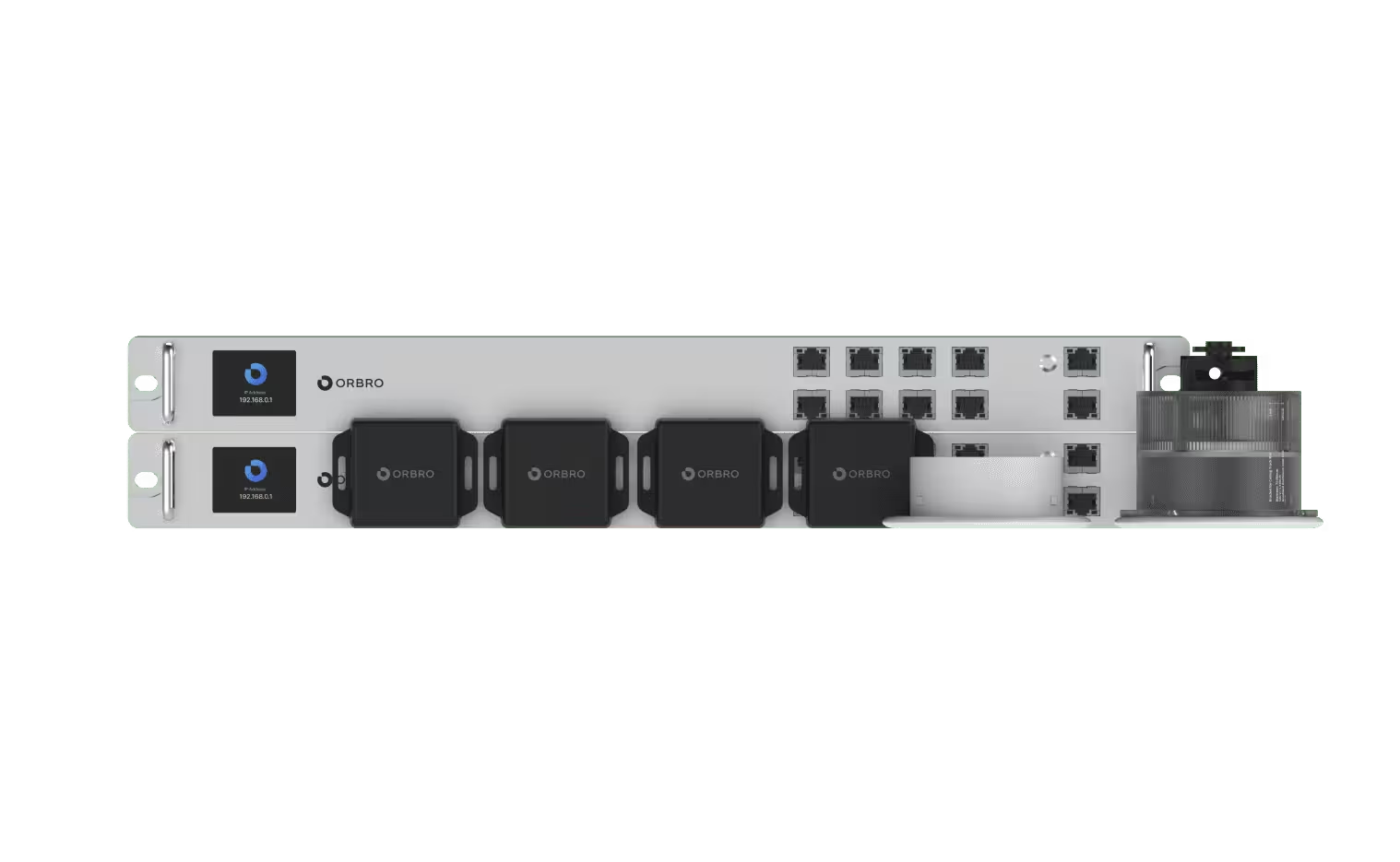도입이 처음이신가요?
ORBRO 전문가가 직접 상황을 분석하고
최적의 솔루션을 제안해드립니다.

What is a Smart Factory?

What is a Smart Factory?
A smart factory refers to a factory that automates and optimizes production lines using IoT technology and artificial intelligence. This enhances the efficiency of the production process, reduces maintenance time, and contributes to improving production output and quality. It revolutionizes the traditional concept of manufacturing, reducing costs incurred in the production process while enhancing the quality of products.
Smart factories, as an innovative production method rapidly spreading in modern manufacturing, are gaining attention for effectively utilizing digital twins and location tracking technology to increase productivity and optimize production processes.
Functions of a Smart Factory
Smart factories focus on intelligently managing and optimizing the production process by integrating various technologies and systems. This enhances productivity, reduces costs, and improves quality. Key functions of a smart factory include:
• 자동화 및 로봇 기술 : 스마트 공장은 첨단 로봇과 자동화 시스템을 도입하여 생산 라인에서의 작업을 자동화합니다. 이는 노동 비용을 절감하고 생산성을 높이는데 기여합니다.
• 디지털트윈 기술 : 제품 또는 생산 프로세스의 디지털트윈을 생성하여 현실 세계의 물리적인 객체를 디지털 환경으로 모델링합니다. 이를 통해 생산 프로세스를 실시간으로 모니터링하고 최적화할 수 있습니다.
• 사물인터넷 (IoT) 기술 : 센서와 연결된 IoT 디바이스를 활용하여 생산 라인의 모든 기기와 장비를 네트워크로 연결합니다. 이로써 데이터를 실시간으로 수집하고 생산 프로세스를 모니터링하여 효율적으로 관리할 수 있습니다.
• 위치추적 기술 : RFID나 GPS를 통한 위치추적 기술을 활용하여 원자재, 제품, 작업자 등의 위치를 실시간으로 추적합니다. 이는 생산라인에서의 자원 관리와 효율적인 작업 배치에 도움을 줍니다.
• 환경 모니터링 및 에너지 효율화 : 스마트 공장은 생산 과정에서 발생하는 에너지 소비 및 환경 영향을 모니터링하고 최소화하는데 주력합니다. 환경에 대한 지속 가능한 관리를 통해 친환경적인 생산 방식을 추구합니다.
• 클라우드 컴퓨팅 : 생산 데이터를 클라우드에 저장하고 관리하여 지리적으로 떨어진 위치에서도 실시간으로 데이터에 접근하고 공유할 수 있습니다. 다양한 지점 간의 협업을 원활하게 지원합니다.
(Click to explore Smart Factory solution)
Advantages of Smart Factories
Improved Productivity
Automating repetitive and labor-intensive tasks through the introduction of automation and robotics technology enhances productivity. Additionally, using digital twin for real-time monitoring and optimization increases production efficiency.
Enhanced Quality
Collecting and analyzing data generated on the production line using sensor and IoT technology helps monitor the production process. This reduces defect rates and improves product quality.
Cost Savings
Introducing automated systems reduces labor costs, and predictive maintenance through big data analysis minimizes maintenance costs. Additionally, optimizing the production process increases resource efficiency, leading to cost savings.
Flexibility and Quick Adaptation to Changes
Utilizing digital twin and smart manufacturing systems allows flexible adjustment and modification of the production line. This provides the ability to quickly establish or modify production lines for various products.
Real-time Monitoring and Decision-Making
Collecting real-time data on the production environment through sensor data and IoT technology, and analyzing it quickly with big data and AI, enables swift understanding of the production line status and quick decision-making.
Resource Efficiency
Smart factories adopt energy-efficient production methods to minimize energy consumption. They use big data and AI to monitor and optimize the efficient use of resources.
Environmentally Friendly Production
Creating an environmentally friendly production environment through the eco-friendly design of production processes and energy-efficient production methods. This increases sustainability and minimizes environmental impact.
Smart Factory Examples
• 토요타 (Toyota) : 토요타는 스마트 제조의 선두주자로 꼽힙니다. 그들은 디지털트윈, 로봇 공학, 인공지능 등의 첨단 기술을 적극적으로 도입하여 제조 프로세스를 혁신하고 있습니다. 예를 들어, 고급 로봇이 작업자와 공존하며 작업을 수행하고, 디지털트윈을 사용하여 생산 프로세스를 실시간으로 모니터링하고 최적화하고 있습니다.
• Bosch 스마트 공장 : Bosch는 자동차 및 산업 기술 분야에서 스마트 공장을 구축하고 있습니다. 디지털트윈과 IoT를 통합하여 제조 프로세스를 최적화하고, 위치추적 기술을 활용하여 원자재 및 제품의 이동을 실시간으로 추적하고 효율적으로 관리하고 있습니다.
• GE 스마트 제조 시설 : 일렉트릭 파워, 리뉴얼블 에너지, 건강 관리 등 다양한 분야에서 활동하는 GE는 스마트 제조 기술을 적극적으로 도입하고 있습니다. 디지털트윈과 IoT를 활용하여 생산 설비의 상태를 모니터링하고, 빅데이터 분석을 통해 예측 정비를 수행하여 생산 효율성을 극대화하고 있습니다.
Building a Smart Factory
1. Vision Establishment and Strategic Planning:
Before building a smart factory, a company needs to establish the vision and plan the strategy of the smart factory. Clearly define what technologies to adopt and what goals to achieve.
2. Current Situation Analysis and Requirement Definition:
Analyze the current production system and technological level, and define the requirements needed for the introduction of a smart factory. Identify strengths and weaknesses in the production process and identify areas that need improvement.
3. Technology Selection and Integration:
Select from various technologies that make up a smart factory, such as digital twin, IoT, big data analysis, artificial intelligence, and automation. Build a system that efficiently integrates these technologies for use.
4. Introduction of Automation and Robotics:
Automate part or all of the production line and introduce robots to perform labor-intensive tasks automatically. This enhances productivity and
5. Building Digital Twin:
Create a digital twin of products or the production process. This involves replicating physical objects or processes in the real world digitally, allowing for monitoring and optimization.
6. Introduction of Internet of Things (IoT) Technology:
Introduce sensors and IoT technology to connect all devices and equipment on the production line and collect data in real-time. This enables monitoring and optimization of the production process.
7. Introduction of Location Tracking Technology:
Introduce location tracking technologies such as RFID, GPS, UWB RTLS to track the real-time location of products, resources, and workers. This facilitates optimal resource allocation.
8. Application of Big Data and Artificial Intelligence (AI):
Utilize big data technology to collect and analyze production data. Use AI to find patterns in data and perform predictive analysis. This optimizes the production process and allows for predictive maintenance.
9. Introduction of Cloud Computing:
Store and process production data in the cloud, allowing real-time access and centralized monitoring of data.
10. Strengthening Security:
Security is crucial in smart factories where a lot of data is exchanged. Introduce appropriate security systems to ensure data integrity and confidentiality.
11. Education and Infrastructure Improvement:
Conduct training for employees to effectively use new technologies and systems. Improve infrastructure if necessary to support the establishment of a smart factory.
관련 제품
작업자 위치추적 패키지
UWB 단말기를 작업자 또는 장비에 부착하여, 실시간으로 위치 추적을 돕는 제품입니다.


오브로 솔루션 소개
공유하기









